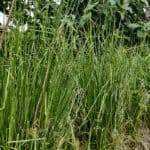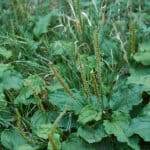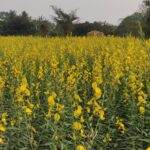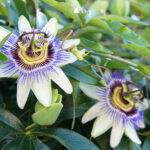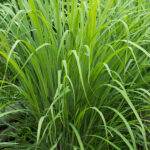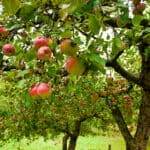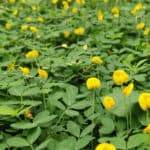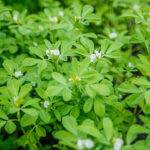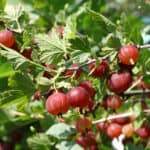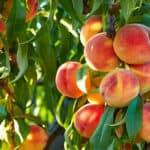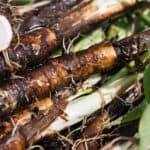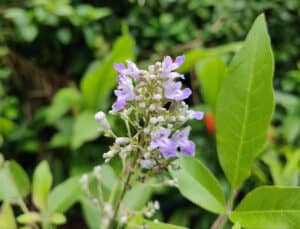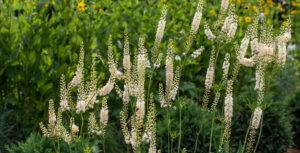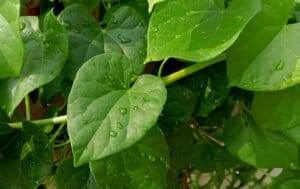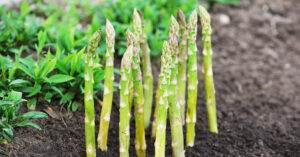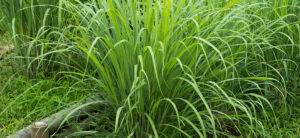Once widely recognized and revered, wood betony was one of the top medicinal and magical herbs in Medieval times. Now, however, it is a lesser-known member of the mint family and is hardly recognized in herbalism today as it was before. This is quite a shame, for it is a useful and distinctly delicious medicinal herb with fascinating indications for the mind, body, and spirit.
Along with its medicinal virtues, wood betony is a charming perennial to grow in the garden and permaculture landscape. With beautiful stalks of purple flowers and aromatic leaves, it has several benefits for the garden in both appearance and function.
With this growing guide, I hope you’re inspired to try your hand at growing wood betony and experience its unique medicine for yourself. With more and more gardeners enjoying its bounty, perhaps this medicinal will find its way back into more people’s homes, and its reputation as a valuable medicinal will be resurrected at last.
Wood Betony Overview
Wood betony is a plant of many names – both common and scientific – which can make it confusing when reading or researching information about it. Its list of scientific names includes Stachys betonica, S. officinalis, and Betonica officinalis. As far as I can find, the most up-to-date scientific name is S. officinalis, but you may find it under these various names in field guides and medicinal plant books.
Its common names include purple betony, betony, common hedgenettle, lousewort, and bishop’s wort. Another plant, Pedicularis canadensis, also shares the common names wood betony, betony, or lousewort.
P. canadensis and other Pedicularis plants are native to North America and are botanically unrelated to S. officinalis. P. canadensis is part of the broomrape or Orobanchaceae family and is used medicinally, though not in the same ways as European wood betony. They also have differing growth structures and appearances, so they wouldn’t be confused as the same plant out in the field.
Wood Betony is a member of the Lamiaceae, or mint family, and is native to central and southern Europe. It has naturalized in parts of the Northeast United States, including New York and Massachusetts, but hasn’t spread like many other European medicinal plants.
Its genus, Stachys, is one of the largest in the mint family and contains about 400 species. Other common plants in the Stachys genus include Lamb’s ear (Stachys byzantina) and Chinese artichoke (Stachys affinis). While some Stachy species are medicinal or edible, they are not medicinally interchangeable with S. officinalis.
History of Wood Betony
S. officinalis is found in various historic texts as a prized medicinal plant. It was historically referred to as Vetttonica because the people who discovered it were Spanish people known as the Vettones. The name Vettonica eventually evolved to betonica and is now the more common betony.
Its discovery and fame were documented in the natural history text Historia Naturalis, Book XXV.84 – The Natural History of Wild Plant, by Pliny The Elder. This ancient encyclopedia-type manuscript originated from the Roman Empire in about 77 AD. Originally written in Latin and translated to English, Pliny writes:
“The Vettones, a people of Spain, were the original discoverers of the plant known as the “vettonica” … This is a plant more highly esteemed than any other … Indeed, this plant enjoys so extraordinary a reputation, that it is a common be-lief even that the house which contains it is insured against misfortunes of every kind.”
To further elaborate on its historic virtues, wood betony is described in length in the lovely Latin poetry book, Hortulus, or My little garden, by Walahfrid Strabo, originating from southwest Germany in about 842 AD. In this 9th-century text, he describes his reverence for this plant as well as some of its traditional medicinal uses. As I am a lover of poetry, history, and herbs, I couldn’t help but provide the poem here for you to enjoy. Translated by Raef Payne, it reads:
“In the mountains and woods, in the meadows and depths of the valleys –
Almost everywhere, far and wide, grows the precious abundance
Of betony. Yet I have it too in my garden, and there
It learns a softer way of life in the tended soil.
So great is the honor this genus has won for its name
That if my Muse wished to add to it she would find herself
Defeated at last, overwhelmed; and soon she would see
She could add nothing more to the value it has already.
Perhaps you pick it to use it green, perhaps
To dry and store away for the sluggish winter.
Do you like to drink it from cloudy goblets? Or do you
Prefer to enjoy what it gives after long and careful
Refining? Whatever your fancy, the wonderful powers
Which this herb has will supply all your needs.
Indeed some men I know rate it so highly
That, hoping to find protection from every harm
Which assaults the inner body, day after day
They drink a dose of this harsh but soothing tonic.
Again, if your head is cut and the wound turns septic,
Crush some sacred betony, make of it dressings
And apply them frequently: you will be amazed
How quickly its powerful influence closes the wound.”
These early works were just the beginning of wood betony’s fame, and it continued to be a stable herb in medicinal literature for the next several centuries. Throughout the middle ages, it was considered a cure-all (along with St. John’s Wort) for psychiatric and spiritual problems, such as demon possession and witchcraft (Wood, 136). Thus, it was used as a protective herb to ward off dark spirits and malicious spiritual attacks. What was seen as spiritual attacks and demon possessions then would be described now as hysteria, psychosis, panic attacks, severe anxiety, or delirium. It was also commonly used for head injuries, as mentioned above in Strabo’s poem.
Wood betony was deemed one of the most valuable medicinal herbs for several thousand years. It was used in different formulas for all kinds of illnesses and complaints, designating it as an herbal panacea of its time. But, this fame seemed to dissipate over the last couple of centuries. In The Book of Herbal Wisdom, Matthew Wood writes, “Unfortunately, herbs are subject to fads, and like many other famous plants, Wood Betony passed into oblivion and was virtually forgotten.”
Wood Betony Identification
S. officinalis grows as a clumping herbaceous perennial. Its base leaves grow densely packed in a basal rosette. The leaves are dark green, slightly fuzzy, and cordate (heart-shaped) with crenate (scalloped) margins and distinctive venation. As the plant matures over the years, its base leaves grow more densely packed and start to resemble a miniature bush.
Around mid to late June, it starts to send up its square-stemmed flowering stalks (the square stem is a distinguishable trait of the mint family). The flowering stems arise from the center of the densely packed base leaves and can grow 12 inches high. Alternate, stalkless leaves grow along the flowering stem. They are much smaller than the basal leaves and appear in pairs at wide intervals.
The bright purple to pink flowers are the characteristic two-lipped flowers of the Lamiaceae family and grow in a whorl around the stem. The flowers appear at the top of the stem as a spike but also grow lower down on the stem and are separated by intervals of alternate leaves.
If you rub one of its leaves between your fingers, wood betony releases a distinct aroma that is quite pleasant and unique.
Wood Betony Propagation and Planting
While wood betony isn’t as opportunistic as its many mint cousins, it’s still easy to grow and low maintenance. It does well in temperate climates and grows in USDA hardiness zones 4a-9. In climates with mild winters (zones 8-9), it’s an evergreen, frost-tolerant perennial that won’t drop its leaves. It will lose some leaves near its base, and the flowering stalks will die, but the main clump will stay intact – happy and lush.
It prefers moist, well-draining, rich garden soil with an acidic to neutral pH range (6.0-8.0). When grown in fertile soil, it will be lush, quick-growing, and flower profusely, but it will also tolerate clayey, loamy, or sandy soils. If you have clay, loam, or sandy soils, it would be worthwhile to amend the soil with some organic matter to help your wood betony grow.
Plant it in full sun to partial shade. Although it can tolerate full shade, some hours of direct sun will help it produce more flowers.
Wood betony can be started from seed or propagated via cutting or root division. If started from seed, plant it directly in the garden or containers in early spring; once they’ve sprouted a few pairs of true leaves, transplant or thin to 12 inches to 2 feet apart.
The fully mature plants can reach about 2-3 feet in height and width. Once mature, you can divide the plants in late fall or early spring via root divisions. Wood betony will self-seed, so you may find baby wood betony sprouts coming up near your mother plant. It won’t spread quickly or aggressively. Instead, your one large clump will slowly have a few neighbors over the years. If you don’t mind this progression, give your mother plant plenty of space to allow her seeds to sow around her.
Wood Betony Pests and Diseases
Wood betony is incredibly pest and disease-resistant thanks to its aromatic leaves. When I lived in Oregon, we always had powdery mildew sweep through the area, and it would affect most of our plants in late summer. Wood betony, however, was never affected, nor did I ever see it affected by any pests.
Other sources confirm wood betony’s pest and disease resistance, though one source says it can be damaged by slugs and snails. However, where I lived in Oregon, we had a massive slug problem, and I never noticed them on the wood betony.
Wood Betony Garden Benefits
Wood betony has a long bloom season; its bright and alluring flowers bloom from June to August, and it’s a favorite amongst pollinators. It attracts butterflies, bees, hummingbirds, and many other pollinating friends. When in full bloom, wood betony sings with the chorus of buzzing insects, as it’s crowded with pollinators from morning to dusk all summer long.
Once established, wood betony is remarkably hardy, deer-resistant, and can tolerate drought, heavy winds, and frosts. It does well in a container or pot for a patio garden but will also do great in meadows, naturalized areas, and sloped/banked areas. Even though it can spread 2-3 feet wide, it still does well in small areas such as walkways and landscape designs as an attractive mounding perennial.
In a permaculture landscape, wood betony would be in the herbaceous layer of a food forest and help attract pollinators to the area.
Harvesting Wood Betony
Wood betony’s leaves can be harvested throughout the growing season, but they are traditionally harvested when the plant is in flower, along with the flowering stalk.
I intuitively feel the leaves are at their most medicinal right before it sends up their flowering stalk, so I usually go through and snip several leaves at that time. A large, healthy mound will produce a significant amount of leaves, so I don’t cut the whole plant down. Instead, I snip a few hand fulls here and there so it still has plenty of vegetative growth to support flowering. Plus, I admire the flowers and prefer to leave them for the pollinators.
It’s best to harvest wood betony in the morning after the dew has dried when the aromatic compounds in the leaves are at their peak. You can dry the wood betony leaves on screens or hanging baskets or use them fresh in a tincture or other medicinal preparation.
Wood Betony Medicinal Uses
Medicinal Actions:
- Astringent
- Nervine relaxant/trophorestorative
- Bitter tonic
- Carminative
- Anti-spasmodic
- Vulnerary
- Expectorant
Parts Used: Leaves; aerial parts in flower
Energetics: Cooling/warming (depends on the growing habitat and medicinal preparation), drying
Medicinal Preparations: Infusion (tea), tincture, infused oil, salve, flower essence
Though used as an herbal panacea in times past, wood betony’s modern usage is much more specific. Rather, I should say; it has very specific indications to which all of its general uses point back to.
The overall aspect of wood betony’s medicine that everything else falls under is its ability to ground; its ability to bring the vital force down into the body from the mind and ground one into the present.
Technically, the vital force is always grounded in the body, so woody betony grounds the vital force on a psychological level and helps stabilize the nervous system through its gentle nervine and trophorestorative properties.
When someone feels ungrounded, it means their energy is stuck in their mind. Their thoughts are racing, and they may be experiencing anxiety, tension, overwhelm, or stress. There is a feeling of disconnect from the body, and the mind can’t stop projecting into the future or reliving the past. Along with these psychological/emotional discomforts, there may be lightheadedness, headache, and digestive problems.
On the other hand, the ungroundedness may not necessarily be negative but could be associated with being overly excited and stimulated. In this case, there’s a feeling of being unable to focus, eat, or slow down.
All of these indications point to an overly excited/stimulated nervous system and the vital force dwelling in the mind. Wood betony has a remarkable ability to help ground one back into their body so they may feel more regulated and centered. Wood betony is able to ground through its nervine relaxant/trophorestorative action and bitter tonic action.
As a nervine relaxant, it gently calms and sedates the nervous system, helping it to switch to the parasympathetic, or rest and digest side of the nervous system. Along with providing a gentle relaxant action, it also works on a deeper layer as a nervine trophorestorative. Wood betony restores the overall nervous system, strengthening and nourishing it so that it may respond to stress in a more resilient way. This restorative action also helps the nervous system calm down and switch back to the parasympathetic side faster and easier than a burnt-out, frazzled nervous system can.
Wood betony is also a beneficial digestive ally. While bitter, wood betony has a complex flavor profile thanks to its aromatic volatile oils, so I would consider it a mild bitter.
All bitters stimulate a downward, draining energy in the body as they are cooling and stimulate the digestive system to start prepping for food. This occurs through tasting bitterness on the tongue. The tongue has bitter receptors; once triggered, these receptors communicate with the nervous system to send signals to the digestive system to start preparing for food. Specifically, the liver is triggered to start producing more bile, and the gallbladder starts excreting more bile into the stomach. This has a net effect of strengthening overall digestion and restoring proper metabolism, thus increasing the breakdown and absorption of food and nutrients and eliminating toxins and metabolic waste products.
Thanks to wood betony’s aromatic compounds, it affects the digestive system in more ways than one. Its aromatic volatile oils give it a carminative action, which increases circulation to the digestive system and relieves cramps, bloating, and gas. These aromatic compounds also give it a mild anti-spasmodic property, which enhances its ability to ease painful digestive spasms and cramps.
Because of wood betony’s bitter tonic, carminative, and anti-spasmodic actions, it is beneficial for a variety of digestive complaints, such as indigestion, lack of appetite, and general digestive weakness.
As you’ll see with herbs, however, quite a few plants have similar actions, so you’ll want to look at the overall pattern of an herb’s medicine to know which herb is the right one to use. This includes reviewing the herb’s specific indications, such as its psychological AND physiological picture. With wood betony, you’ll look for signs of a stimulated nervous system (anxiety, stress, inability to focus), general ungrounded spaciness (and all the indications listed above), and digestive complaints.
It’s also important to mention wood betony’s affinity for the solar plexus; a large nerve plexus located between the sternum and the navel. Physiologically, this nerve center regulates digestion. The solar plexus is related to the 3rd chakra or the Manipura chakra. It not only governs our “digestive fire,” but also represents one’s courage, willpower, and inner strength. When the solar plexus is weakened, there can be digestive issues, along with a lack of confidence, insecurities, boundaries, willpower, and a sense of disconnection from the true self.
In this way, the healing benefits of wood betony are intimately connected to the solar plexus. This is mentioned and taught by respected herbalists, including Matthew Wood and Sajah Popham. In the Materia Medica Monograph on Wood Betony written by Sajah Popham, he ties it all together in this statement:
“To summarize, this leads to a relatively clear constitutional picture or pattern of which Wood Betony is highly well suited for. We have general digestive symptoms present, with an overall thin, weak and deficient constitution, coldness in the periphery, brain fog and/or headaches from lack of cerebral circulation, musculoskeletal tension, ungroundedness, lack of confidence/willpower, potential liver stagnation/tension, and nervous debility – or what the old docs called “neurasthenia.” (…) All of these things ultimately boil down to weakness in the solar plexus, which Wood betony corrects in a gentle yet profound way.”
Wood Betony: A Pollinators Friend and Ancient Healing Remedy
Wood betony is a beautiful and unique herbaceous perennial that is a gift to both the garden and gardener. Incredibly easy to grow and remarkably hardy, I believe this plant deserves a spot in every landscape design, whether it’s solely used as an insectary plant or planted for its medicinal virtues. Either way, I’m confident you’ll fall in love with this charming little herb, just as the ancient healers and monks did for centuries past.




